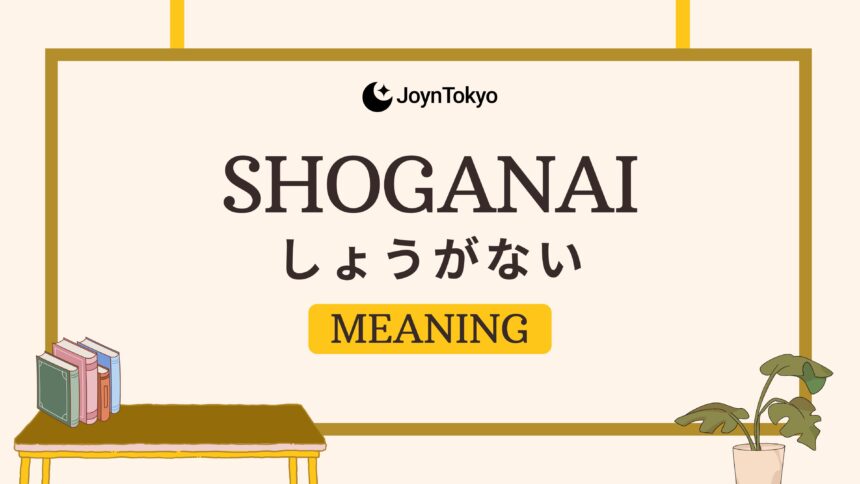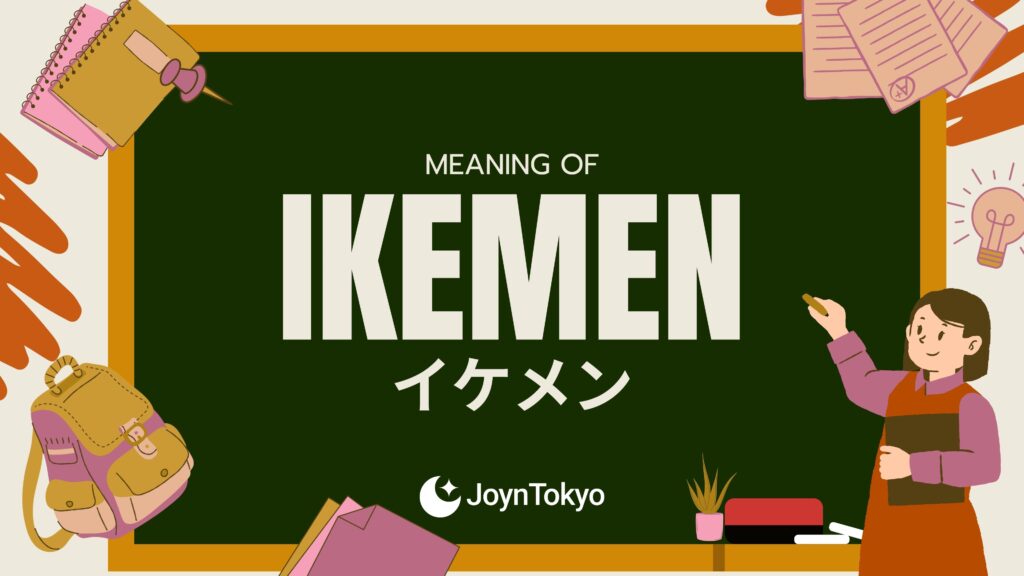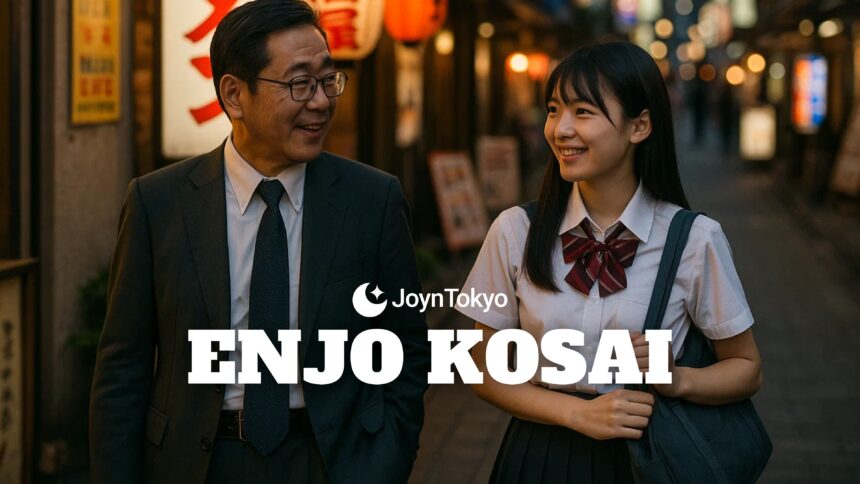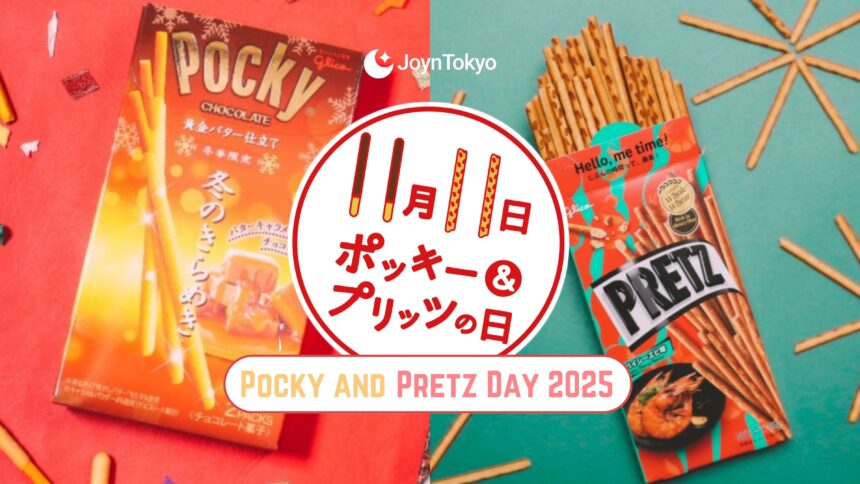You’ll often hear Japanese people say shoganai (しょうがない / 仕方がない) when plans go wrong—like when it rains on a holiday or the train runs late. This short phrase captures a deeply rooted part of the Japanese mindset: accepting the inevitable with calmness and dignity. For foreigners living in Japan, understanding shoganai offers valuable insight into how Japanese people handle challenges, maintain harmony, and continue forward with resilience.
The Essence of “Shoganai”
Before exploring its nuances, it’s essential to grasp both the literal and emotional meaning of shoganai. Although it appears simple, this expression holds layers of cultural meaning. It reflects how Japanese people view control, emotion, and acceptance in daily life.
The Literal Meaning

The word shoganai combines two parts: “sho” (処 / しょう) meaning “way,” “method,” or “means,” and “ga nai” (がない) meaning “there is none.” Together, the phrase roughly translates to “there’s no way” or “it can’t be helped.” In English, it parallels common phrases like “That’s life,” “There’s nothing we can do,” or “It can’t be helped,” expressing acceptance when something cannot be changed.
The Emotional Meaning
While shoganai might sound like giving up, it’s not defeatist. Instead, it represents calm acceptance, emotional control, and a focus on moving forward rather than dwelling on what went wrong. Saying shoganai allows people to acknowledge frustration gracefully and regain emotional balance. It’s an act of self-discipline that transforms helplessness into composure.
To truly understand why shoganai carries such emotional weight, we must look at its cultural and historical background. The mindset behind the word is not merely linguistic—it reflects centuries of social values built around harmony and endurance.
Cultural Background Behind “Shoganai”

Japan’s collectivist culture emphasizes social harmony (wa) and discourages excessive displays of emotion. In situations beyond one’s control—such as natural disasters, delays, or unexpected setbacks—saying shoganai helps maintain group harmony and demonstrates emotional maturity. It’s an acknowledgment that sometimes, peace of mind is more important than resistance.
This attitude became particularly visible during moments of national hardship. For example, after the 2011 Great East Japan Earthquake, many people responded with remarkable calmness, focusing on rebuilding communities rather than assigning blame. Such behavior illustrates how shoganai fosters resilience and cooperation during adversity.
Acceptance Before Action
Critics sometimes interpret shoganai as passive resignation. However, in Japanese culture, it reflects a sequence: acceptance first, action second. By accepting reality, people can redirect their energy toward what can still be improved. This mindset encourages practical optimism—an understanding that while not everything is controllable, effort should focus where it truly matters.
Shoganai and Group Harmony
In group-oriented societies like Japan, individual emotions are often balanced with collective needs. Shoganai allows people to accept inconvenience or disappointment without disturbing others. It reinforces social cohesion by prioritizing understanding over frustration. In this way, shoganai is not just about endurance—it’s a social lubricant that helps daily life run smoothly.
How and When to Use “Shoganai”

Foreigners will hear shoganai in many everyday situations, from minor inconveniences to larger frustrations. It’s a phrase that softens disappointment while showing emotional composure. Used correctly, it can also express empathy and shared understanding between speakers.
Common Situations

You’ll often hear shoganai in everyday life when things don’t go as planned. For example, when it rains during an outdoor event, someone might say, “Shoganai ne, let’s go to a café instead.” If the train is delayed, a calm response like “Well, shoganai. We’ll just be late,” expresses acceptance without frustration. And when a colleague quits unexpectedly, people often say, “It’s tough, but shoganai. We’ll manage,” showing both understanding and resilience.
These situations illustrate how shoganai helps people move on quickly and gracefully. It signals acceptance without bitterness and encourages a composed response to life’s imperfections. Rather than dismissing problems, it acknowledges them while choosing not to dwell on them.
Variations and Tone
There are several ways to express shoganai, depending on tone and formality. しょうがないね (Shoganai ne) is casual and often used among friends, while 仕方ない (Shikata nai) sounds slightly more formal or neutral. An older version, しょうがあるまい (Shou ga arumai), literally means “there’s no other way” and carries a traditional, stoic tone. Choosing the right variation helps convey sincerity and respect in different situations.
Example Sentences Using “Shoganai”
The following examples show how shoganai appears naturally in conversation. Each one reflects how Japanese speakers accept situations with calm understanding rather than frustration.
| Japanese | Romaji | English |
|---|---|---|
| 今日は雨だね。しょうがないから家にいよう。 | Kyō wa ame da ne. Shōganai kara ie ni iyou. | It’s raining today. It can’t be helped, so let’s stay home. |
| 電車が遅れてるけど、しょうがないね。 | Densha ga okureteru kedo, shōganai ne. | The train is delayed, but it can’t be helped. |
| 結果は悪かったけど、しょうがないよ。次がんばろう。 | Kekka wa warukatta kedo, shōganai yo. Tsugi ganbarou. | The result wasn’t good, but it can’t be helped. Let’s try harder next time. |
| しょうがないね、これが現実だよ。 | Shōganai ne, kore ga genjitsu da yo. | It can’t be helped; this is reality. |
Each example demonstrates that shoganai doesn’t deny frustration—it transforms it into composure. Through this phrase, Japanese communication emphasizes calm acceptance and emotional resilience.
“Shoganai” in Modern Japan
Even in modern Japan, shoganai continues to shape how people respond to life’s ups and downs. It’s used at work, in schools, and even online, where it reflects both humility and humor. Whether dealing with bureaucracy, long commutes, or natural disasters, shoganai allows people to express patience while staying composed.
Everyday Stoicism in Contemporary Life

In daily life, shoganai functions as a small emotional release valve. It helps people maintain perspective in a fast-paced and often rigid society. Instead of complaining, individuals use the phrase to acknowledge inconvenience and move forward. This small act of verbal acceptance promotes emotional balance and reduces conflict.
A Shift Among Younger Generations
Among younger Japanese people, the phrase is evolving. Some use shoganai more playfully or even ironically—posting #shoganai on social media when they burn dinner or miss a train. This humorous twist shows that while the cultural roots remain, younger generations are reinterpreting shoganai in lighter, more self-aware ways. The essence of calm acceptance still endures, but now with a modern sense of irony.
The Spirit of Acceptance
Understanding the shoganai mindset provides a window into Japan’s collective psyche. It embodies endurance, cooperation, and grace under pressure—values that continue to shape Japanese society today. By learning shoganai, foreigners can gain not only a useful word but also a cultural philosophy of emotional balance and practical optimism.
Ultimately, shoganai teaches us that life is full of uncontrollable circumstances. Instead of resisting what we cannot change, we can choose calm acceptance and focus on what we can influence. It’s more than just a phrase—it’s a timeless reminder of the strength found in serenity.







